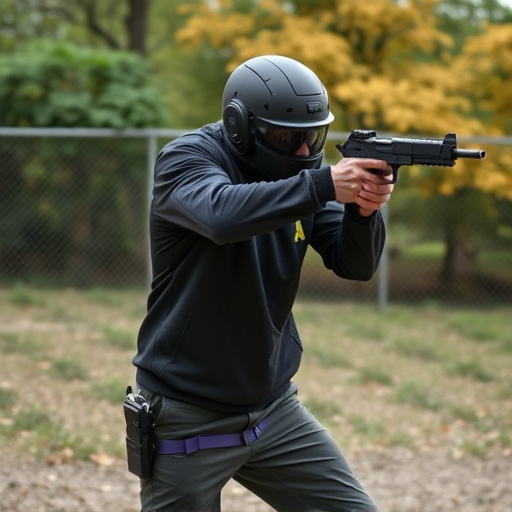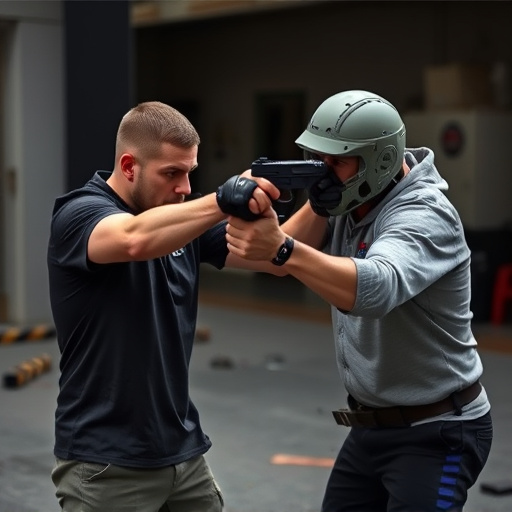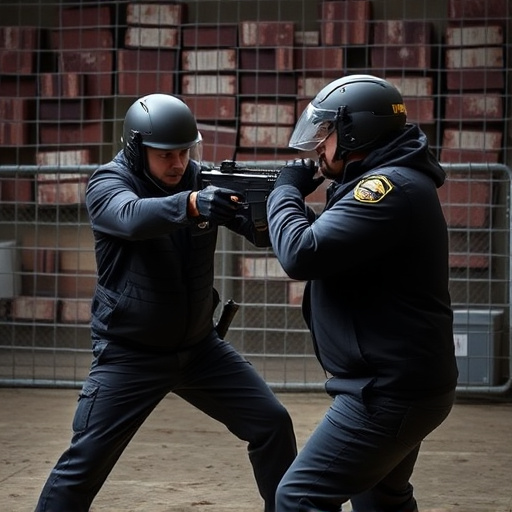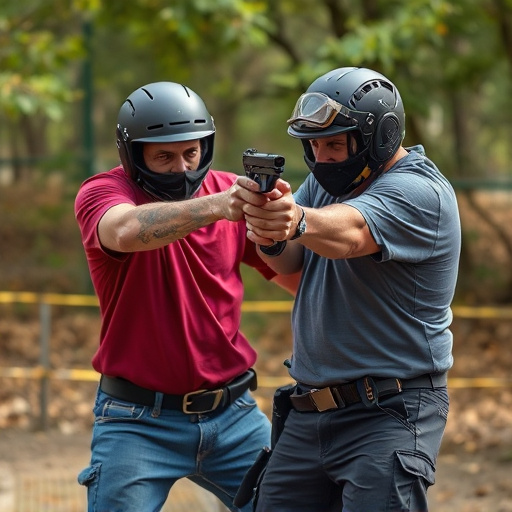In recent years, there's been a rise in bulk stun gun purchases, leading to safety concerns within retail stores. The widespread availability of these devices requires retailers to balance customer access and security. Current detection methods like metal detectors are limited by material variations and staff shortages. Advanced technologies such as sensitive metal detectors and AI analytics, along with employee training programs, show potential for effective concealed stun gun detection. Integrating these measures into existing security protocols aims to create safer shopping environments while maintaining customer privacy and experience.
In recent years, the hidden prevalence of bulk stun gun purchases has raised significant safety concerns within retail environments. As more individuals opt to conceal these weapons, traditional security measures struggle to keep pace with this evolving threat. This article delves into the challenges faced by retailers in detecting bulk stun guns, exploring current technologies and their limitations. We also present potential solutions and future considerations to enhance security and mitigate risks associated with these concealed weapons in retail stores.
- The Rise of Stun Gun Concealment and Retail Store Safety
- Challenges in Detecting Bulk Stun Guns: Current Technologies and Limitations
- Potential Solutions and Future Considerations for Stun Gun Detection in Retail Environments
The Rise of Stun Gun Concealment and Retail Store Safety

In recent years, there’s been a significant shift in the accessibility and concealment of stun guns, with an increasing number of individuals opting to carry self-defense devices for personal safety. This trend has raised important concerns within retail stores, especially those that attract high foot traffic or cater to diverse customer needs. The ease of purchasing bulk stun guns has led to a surge in their availability, making them more accessible to the general public. While this accessibility promotes individual empowerment and peace of mind, it also presents challenges for retail environments where potential security risks must be managed.
Retail stores, in particular, are now faced with the challenge of balancing customer access and safety. As stun guns become more concealed and easily obtainable, detecting their presence becomes a complex task. Retailers need to adapt by implementing advanced security measures, such as metal detectors and trained staff, to address this evolving threat. Ensuring the safety of both customers and employees is paramount, requiring a proactive approach to stay ahead of these hidden yet potent self-defense tools, especially when considering bulk stun gun purchases.
Challenges in Detecting Bulk Stun Guns: Current Technologies and Limitations

Detecting bulk stun guns in retail stores poses unique challenges due to their compact size and diverse designs. Current technologies largely rely on metal detectors and visual inspections, but these methods have significant limitations when it comes to identifying stun guns tucked away in bags or hidden under clothing. Metal detectors, while effective for traditional metallic objects, struggle with the varied materials used in modern stun guns, many of which are non-metallic.
Visual inspections by staff can be problematic, as stun guns often look like everyday items like flashlights or personal care products. Moreover, stores face staffing shortages and time constraints, making it impractical to conduct thorough visual searches for each customer. These limitations underscore the need for more advanced detection technologies that can accurately and efficiently identify bulk stun guns in retail environments.
Potential Solutions and Future Considerations for Stun Gun Detection in Retail Environments

In addressing the concern of concealed stun gun detection in retail environments, several potential solutions emerge. One approach involves leveraging advanced technology such as metal detectors equipped with sensitivity adjustments and AI-driven analytics to differentiate between genuine items and hidden stun guns. Retail stores can also implement bulk stun gun for retail stores programs, allowing staff to quickly identify common weapons and their potential replicas, enhancing detection capabilities.
Future considerations should focus on ongoing research into more sophisticated sensor technologies capable of detecting a wider range of materials and designs used in stun guns. Additionally, regular training sessions for store employees can significantly improve their ability to spot suspicious behavior and potential hidden weapons. Integrating these measures into existing security protocols will contribute to creating safer shopping environments while balancing customer privacy and experience.
The growing trend of stun gun concealment poses significant challenges to retail store safety. While current detection technologies have limitations, especially when dealing with bulk stun guns, exploring innovative solutions is crucial. By investing in advanced equipment and implementing strategic security measures, retailers can enhance their ability to detect and deter the use of concealed stun guns, ultimately fostering a safer shopping environment for all. These efforts are essential in light of the increasing availability of bulk stun guns in retail markets, ensuring that folks can shop without fear.
